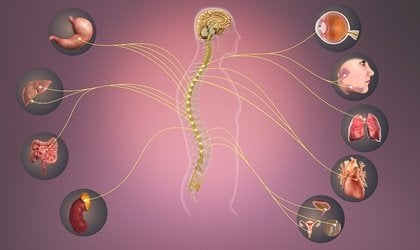Make a presentation in a contest, react to an out-of-control car, discover that the alarm did not start in the morning, run away from someone who annoys us, etc. These situations characterized by stress, anxiety or a clear sense of danger are regulated by the sympathetic nervous system.
In our day-to-day life we are hardly aware of the large number of situations in which this structure operates, there is no need for a real or tangible risk to activate it.
- Factors such as daily stress or the simple pressure that usually accompanies each of these days reflect almost something admirable: we are organisms designed to survive.
- To have (or at least try to control) the significant elements of the environment around us.
Thus, situations as common as running to catch the bus and not being late for work, react in time so that a cup does not fall to the ground, so that our dog does not run through the door or that our son does not put something. that fell to the ground in the mouth are simple examples of the importance of this structure.
What we feel right now is nothing new to us, the heart accelerates, our muscles stretch and we are able to move extremely fast in seconds.
This whole physiological process in the face of any stimulus and situation of strong emotional connotation is organized by this system, of which we will review more information below.
“Life is bearable only when the body and the soul live in perfect harmony, when there is a balance between the two and when they are respected” – David Herbert Lawrence-
The sympathetic nervous system is one of the branches of the autonomous nervous system, first of all we must remember that we are faced with a type of structure responsible for a lot of involuntary functions.
That is, tasks such as controlling heart rate, digestion, sweating, etc. are dimensions regulated by both the sympathetic and parasympathetic or enteric nervous system.
It is important to know how the sympathetic nervous system is structured, now that we know how it connects, let’s see how it is distributed in the body:
For anyone suffering from daily stress it will be very interesting to know what is going on in their own body in these situations, in addition, if we have high blood pressure, it may also be relevant to know how it affects the sympathetic nervous system. our health.
In fact, studies such as the one published in the Journal of Human Stress explain how this link is formed and what the differences between men and women are.
However, the mechanism of action of the sympathetic nervous system in any situation of danger or anxiety is one of the most complex and impressive processes. Let’s look in a diagram at how this system reacts to a threatening stimulus:
In conclusion, as the philosopher Henri-Frédéric Amiel said, our body is the perfect temple of nature, it is something we have been given, but it is our duty to take care of it and also to study it.
Only then can we better understand each other, understand why we are who we are, and why certain problems or conditions arise when we least expect them.

